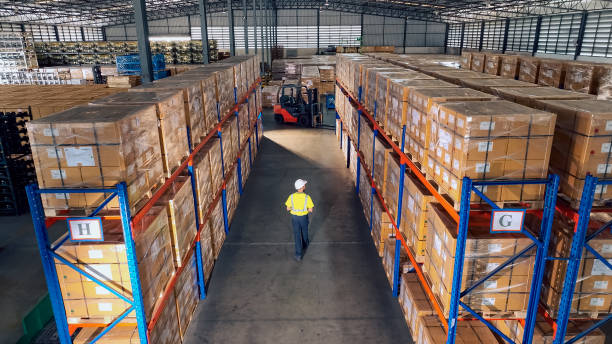Pallet management plays a vital role in the logistics industry, ensuring smooth operations by helping businesses track inventory, reduce product loss, and streamline the supply chain. Whether you’re dealing with product movement, storage, or transportation, an effective pallet management system is crucial for keeping things running efficiently. Many Australian pallet companies are now leveraging advanced technologies to help clients stay compliant with industry standards and regulations.
In this post, we’ll explore 10 best practices that can make your pallet management system more efficient and cost-effective, ultimately improving your logistics operations
1. Pallet Tracking
In today’s world, technology plays a crucial role in pallet management. Using barcodes and RFID tags to identify pallets, companies can track stock movement across the supply chain with ease. Pallet tracking software automates data entry, reducing human error and improving accuracy. This means businesses can monitor their pallets in real-time, minimising stock loss and improving overall operational efficiency. With advanced systems in place, Australian pallet companies can manage inventories with minimal manual handling, ensuring accurate tracking and reducing the risk of errors. If you decide not to embrace this level of technology both Pallet Watch and 2ic pallet software provide tracking software requiring manual entry, data import and API connectivity to your Transport or Warehouse management systems.
2. Optimised Storage Systems
Proper pallet storage is essential to maximising warehouse space and ensuring easy access to goods. A well-organised pallet control system ensures that storage is efficient, with pallets stacked in a way that allows for proper airflow and minimises overcrowding. This is particularly important for industries such as food and beverages, where air circulation is crucial. By optimising storage, businesses can retrieve products faster, reducing delays in picking and shipping.
3. Standard Pallet Sizes
Consistency is key when it comes to pallet management. Using standard pallet sizes ensures compatibility across different supply chain systems, whether sea, air, or road. Standardised pallets make inventory management simpler; help streamline the movement of goods, and reduce space wastage in warehouses. They also pass through customs and quarantine systems smoothly, helping companies comply with regulations and avoid delays.
4. Optimised Inspection Systems
Routine inspections are vital to maintaining a smooth operation and minimising disruptions. An effective pallet control system enables regular inspections, making it easy to spot damaged or broken pallets. Pallet repair systems are crucial for maintaining product integrity and preventing workplace accidents. By keeping pallets in good condition, businesses can reduce costs related to damaged goods and maintain a safer work environment.
5. Clear Pallet Control Policies
Having a well-defined policy for pallet returns is essential for maintaining accountability and reducing discrepancies in inventory management. Clear guidelines around pallet returns, along with a structured pooling system, ensure that both suppliers and companies fulfil their respective obligations. In Australia, following these guidelines helps maintain stock levels and reduces the likelihood of missing pallets, which can disrupt operations.
6. Embrace Technology
Manual pallet management can be time-consuming and error prone. By embracing technology, businesses can automate many aspects of pallet tracking, inventory management, and logistics coordination. Warehouse Management Systems (WMS) and Enterprise Resource Planning (ERP) software are excellent tools for streamlining operations, providing real-time data on pallet movement and inventory. With automated systems, businesses can reduce human error and make informed decisions based on accurate, up-to-date information.
7. Cost Control
Effective pallet management isn’t just about optimising operations; it’s also about controlling costs. By tracking pallet usage and analysing data, businesses can identify areas where costs are exceeding budget, making it easier to implement cost-saving measures. Regular reviews of financial performance within pallet control systems are essential to ensure that costs are in line with business objectives. This kind of monitoring helps prevent operational inefficiencies that could lead to profitability challenges.
8. Staff Training and Development
A crucial component of effective pallet management is staff training. Employees need to be well-versed in proper pallet handling techniques to prevent damage and injuries. This includes training in the safe operation of logistics equipment like forklifts. Additionally, staff should be familiar with the company’s pallet control systems, such as those in Queensland, to ensure safety and efficiency. Regular training ensures that employees adhere to health and safety regulations, creating a safer and more productive workplace.
9. Sustainable Pallet Management Practices
Sustainability is becoming increasingly important in logistics. One way to make pallet management more eco-friendly is by recycling pallets instead of discarding them after one use. This reduces the need for new pallets, cutting down on manufacturing waste and lowering carbon emissions. Many Australian pallet companies are investing in eco-friendly materials and sustainable production processes to help reduce the environmental impact of their operations.
10. Pallet Pooling
Managing a pallet fleet can be resource-intensive, especially for businesses with multiple depots. To alleviate this burden, many companies turn to pallet pooling. Pallet pooling involves outsourcing the management of pallets to a third-party provider, allowing businesses to focus on their core operations. This practice ensures that pallets are always available when needed, reducing the need to purchase, recover, and maintain additional pallets. It’s a cost-effective and efficient solution for businesses with a widespread distribution network.
Conclusion
An effective pallet management system is critical to maintaining smooth logistics operations, reducing costs, and improving inventory management. By implementing these 10 best practices, businesses can optimise their pallet systems, ensure better product flow, and improve overall operational efficiency. Whether you’re using advanced technology or focusing on staff training and sustainable practices, the goal remains the same: a streamlined, cost-effective, and safe pallet management system that supports your business’s long-term success.
For all your pallet control system needs, please visit the Precise Pallet Management website for more details. Our email address is connect@precisepallets.com.au, and the phone number is (03) 9020 4700.






